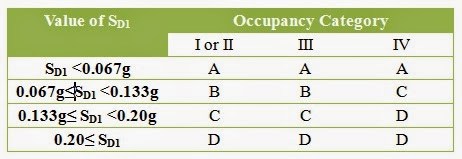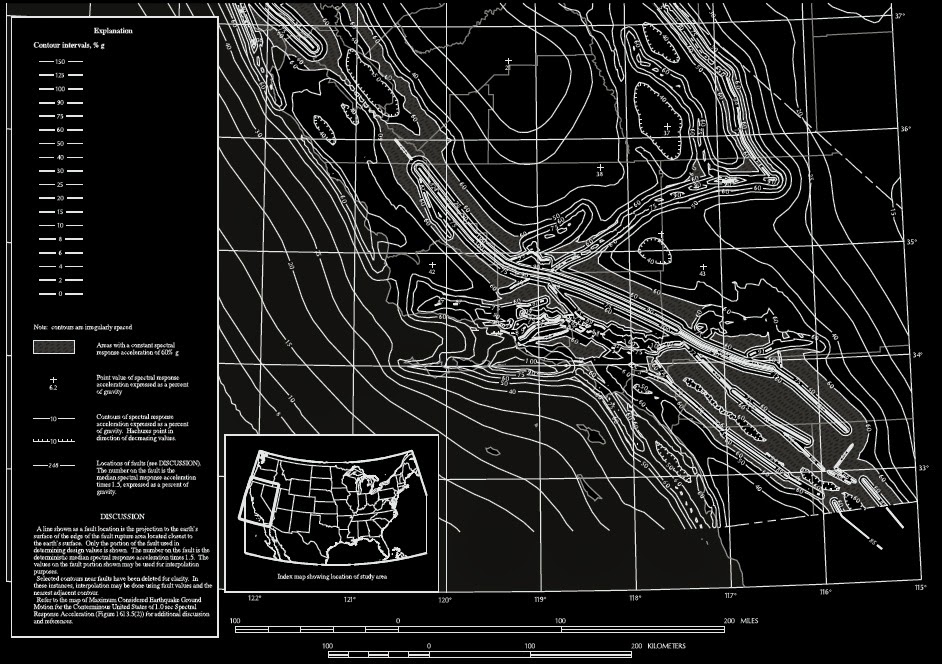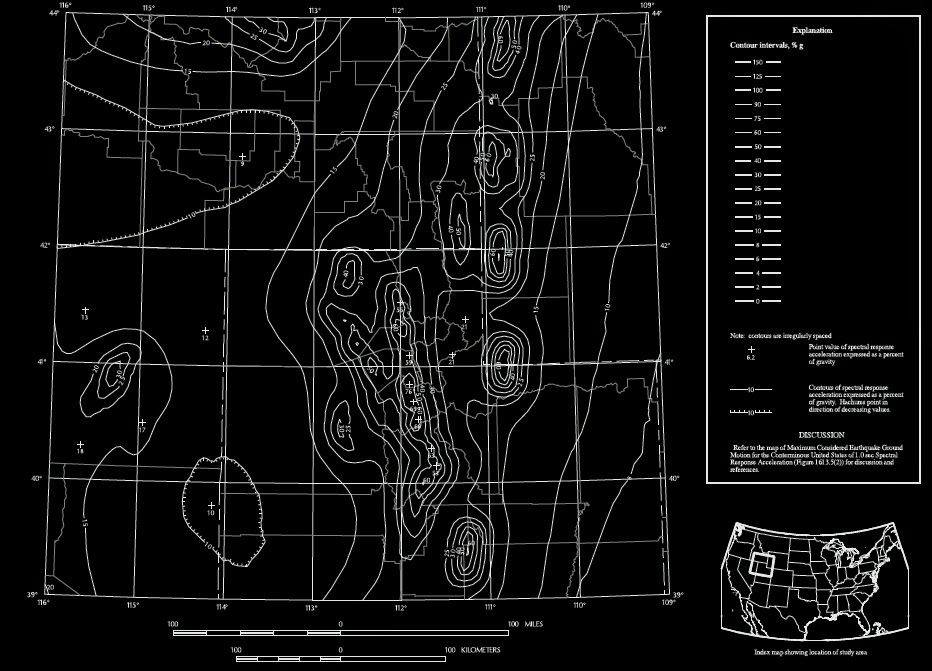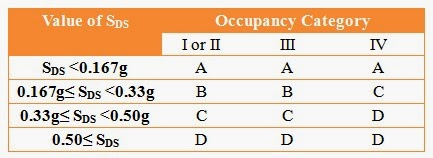How to Determine Seismic Design Category, IBC
In IBC, structural classification and earthquake design category depends on parameter, mapped spectral response acceleration at 1-S period (S1). When S1 is equal or greater than 0.75, the occupancy category I,II and III are assigned. The structure is also assigned to seismic design category E.
Structures located in regions where parameter mapped spectral response acceleration, S1 is equal or greater than 0.75, the occupancy assigned to them is occupancy category IV, also the structure is assigned following requirements of seismic design category F.
Other structures not categorized as E and F, are categorized depending on occupancy category and also in co-efficient design spectral response acceleration, SDS and SD1. The determination procedure of SDS and SD1 are as follows:
SDS stands for design spectral response acceleration at five percent damping at short period and SD1 stand for design spectral response acceleration at five percent damping at 1 second period.
SDS and SD1 determine as follows:
SDS =2/3X SMS (1)
SD1=2/3 XSM1 (2)
Where
SMS= Maximum seismic spectral response acceleration taking into account for short period.
SM1= Maximum seismic spectral response acceleration taking into account for 1 second period.
SMS and SM1 are determined based on mapped spectral acceleration for respective periods. Dear reader we will discuss about determination of SMS and SM1 in our next post.
The category A, category B, category C and category D are more severe design category and can be categories according to Table 1 and Table2.
 |
| Table 2. Seismic design category for 1-S period response acceleration |
We can easily understand that table 1 is based on response acceleration at short period and table 2 is based on response acceleration 1 second period.
Now we will learn about structures located in regions when S1<0.75. In this case we can use
table 1 when following all are applicable:
table 1 when following all are applicable:
A. Approximate fundamental period of structure in each orthogonal direction (each of two)
Ta<0.8Ts
Ts and Ta are determined as per 11.4.5 and 128.2.1 of asce7.B. Fundamental period of structure in each orthogonal direction (each of two) that are used to determine story drift<
Ts
C. Seismic response co-efficient is determined as per ASCE-7
SDS =As per Part-1
R=Response modification factor
I=Occupancy importance factor
D. Diaphragms in structure are rigid. For flexible diaphragms distance between vertical element≤40ft.
In IBC a simplified procedure for seismic design also provided when seismic design category will be determined as per ASCE7.



